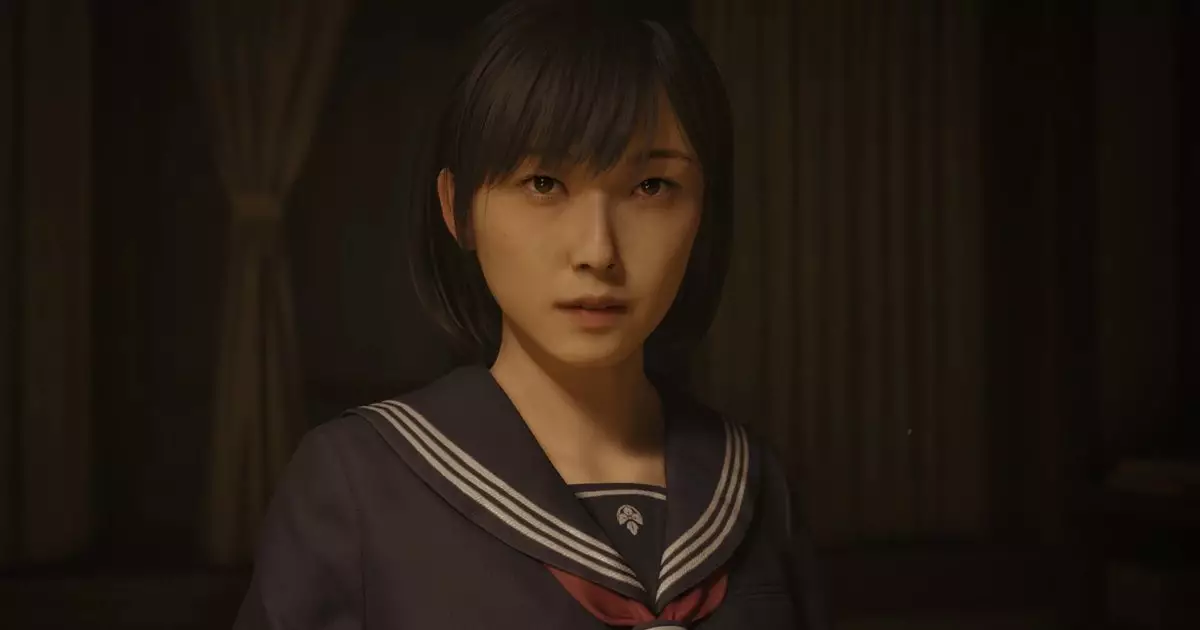With the gaming landscape constantly evolving, the announcement of Silent Hill f has fans buzzing with anticipation and skepticism. Developed by Hong Kong-based Neobards Entertainment, this fresh take on the beloved survival horror franchise takes us to an unusual yet enticing setting: 1960s Japan. Through the lens of its protagonist, Shimizu Hinako, a schoolgirl grappling with her own psychological turmoil, players must navigate a nightmarish world shrouded in thick fog and horror. The choice to move away from Silent Hill’s traditional U.S. backdrop is bold and noteworthy, presenting both an opportunity for innovation and a challenge to the franchise’s established identity.
Aesthetic Shift: Beauty in Terror
One of the most striking aspects of Silent Hill f is its aesthetic direction, which appears to lean into a blend of beauty and horror. The creators invite players to “embrace the beauty hidden within terror,” suggesting a duality that threads throughout the game. From the visuals showcased so far, it’s apparent that the environment transforms into a grotesque spectacle adorned with crimson roots and peculiar floral growths that seem to warp and consume the very fabric of reality. This marks a shift from the franchise’s established motifs of rust and decay to a more bio-horror aesthetic reminiscent of an unsettling dream, where beauty and horror intertwine in a dance of dread.
The involvement of Akira Yamaoka for the soundtrack amplifies that ethereal dread, reminding players of the series’ melodic roots while welcoming newcomers into this haunting realm. Music has always played a crucial role in evoking emotions within the Silent Hill universe, and as Yamaoka steps back into this role, there are high expectations for how he will shape the soundscape of this new nightmare.
Developer Profile: A Mixed Bag of Experience
As we peer into the capabilities of Neobards Entertainment, there remains a blend of excitement and uncertainty. Founded shortly before the current decade, the studio has not yet built a robust portfolio that could reassure wary fans about their capacity to handle a lauded franchise like Silent Hill. Their prior work—mainly as a support studio for major titles such as Final Fantasy VII Rebirth and several Resident Evil projects—suggests technical proficiency but lacks substantial independent accomplishments. Most notably, their single first-party release was a mobile adaptation of Dynasty Warriors, a stark contrast to the psychological depth and intricate artistry required for a title within the Silent Hill franchise.
Yet there’s something commendable about their ambition to take on a critically acclaimed series known for its complex narratives. This bold move sets them on a path that either leads to artistic triumph or a challenging misstep. Their partnership with Ryukishi07, noted for his deeply disturbing narratives in the When They Cry series, brings a chilling narrative framework to the table. With themes exploring heavy subjects like child abuse and gender discrimination, the game does not shy away from the more grotesque elements of humanity, indicating an endeavor to delve deeper into the human psyche and societal issues of the era.
Cultural Context: Articulating Horror Through a New Lens
Shifting the setting to 1960s Japan has sparked debate among enthusiasts—some feel it strays too far from Silent Hill’s roots. Yet, this cultural pivot offers fertile ground for exploring different societal anxieties and horrors that differ from Western narratives. Framed as a reflection of its time, Silent Hill f can serve as a profound commentary on the era’s cultural shadows, making the game more than just a simple horror experience; it transforms into a vehicle for critique, allowing players to navigate uncomfortable themes through the familiar lens of horror gaming. The atmospheric dread can be translated into lessons about the darker aspects of human existence, thus weaving a more intricate tapestry of experience through gameplay.
This game, therefore, positions itself as a potential spiritual successor to other Japanese horror classics, such as Forbidden Siren, breathing new life into the survival horror genre while retaining the essence of what made earlier entries compelling. Players familiar with the exploration and storytelling nuances of titles like Siren may find themselves at home both in mechanics and thematic exploration.
Through this daring blend of innovation and nostalgia, Silent Hill f seeks to not merely frighten but to explore the intricate, often disturbing landscape of human discomfort and fear. With Neobards at the helm, the future of Silent Hill comes with both trepidation and thrilling promise.

